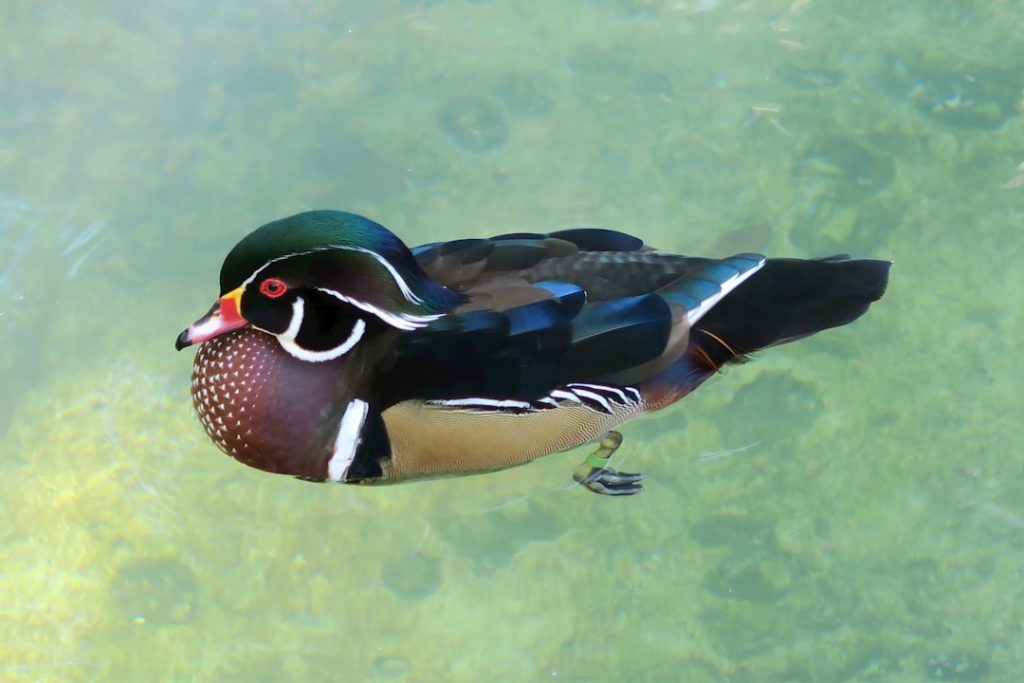Meat type duck breeds are specifically bred for their high-quality meat production. These ducks are known for their large size, fast growth rate, and excellent meat quality, making them a popular choice for meat production in many parts of the world. Unlike egg-laying duck breeds, meat type duck breeds are primarily raised for their meat, making them an important part of the poultry industry. These breeds are often selected for their ability to efficiently convert feed into meat, making them a cost-effective option for meat production. With the increasing demand for high-quality duck meat, meat type duck breeds play a crucial role in meeting the needs of consumers and the food industry.
Table of Contents
- 1 Characteristics of Meat Type Duck Breeds
- 2 Popular Meat Type Duck Breeds
- 3 Benefits of Raising Meat Type Duck Breeds
- 4 Considerations for Raising Meat Type Duck Breeds
- 5 Challenges of Raising Meat Type Duck Breeds
- 6 Conclusion and Future of Meat Type Duck Breeds
- 7 FAQs
- 7.1 What are meat type duck breeds?
- 7.2 What are some popular meat type duck breeds?
- 7.3 What are the characteristics of meat type duck breeds?
- 7.4 How are meat type duck breeds raised?
- 7.5 What is the meat quality of meat type duck breeds?
- 7.6 Are meat type duck breeds suitable for backyard farming?
Key Takeaways
- Meat type duck breeds are specifically bred for their high meat production and are popular among farmers for their fast growth and high meat yield.
- Characteristics of meat type duck breeds include a large body size, rapid growth rate, and efficient feed conversion, making them ideal for meat production.
- Popular meat type duck breeds include the Pekin, Muscovy, and Moulard, each known for their unique qualities and suitability for meat production.
- Raising meat type duck breeds can provide benefits such as high meat yield, efficient feed conversion, and diversified income streams for farmers.
- Considerations for raising meat type duck breeds include proper housing, nutrition, and disease management to ensure optimal growth and meat production.
Characteristics of Meat Type Duck Breeds
Meat type duck breeds are characterized by their large size, fast growth rate, and high meat yield. These ducks are typically heavier than egg-laying breeds, with mature males weighing between 8-10 pounds and females weighing between 7-9 pounds. Their rapid growth rate allows them to reach market weight in a relatively short period, making them an efficient choice for meat production. Meat type duck breeds also have a higher percentage of meat compared to other duck breeds, with a well-developed breast and thigh muscles that contribute to their excellent meat quality. In addition to their meat production capabilities, these ducks are also known for their hardiness and adaptability to various environmental conditions, making them suitable for raising in different climates and regions.
Popular Meat Type Duck Breeds
Some of the most popular meat type duck breeds include the Pekin, Muscovy, and Moulard ducks. The Pekin duck is one of the most widely raised meat type duck breeds, known for its fast growth rate and high meat yield. Originally from China, the Pekin duck has become a popular choice for meat production in many parts of the world due to its excellent meat quality and adaptability to different farming systems. The Muscovy duck is another popular meat type breed, known for its lean and flavorful meat. Muscovy ducks are also valued for their ability to forage and thrive in free-range environments, making them a sustainable choice for meat production. The Moulard duck, a cross between the Muscovy and Pekin breeds, is highly prized for its rich and flavorful meat, making it a popular choice for foie gras production.
Benefits of Raising Meat Type Duck Breeds
Raising meat type duck breeds offers several benefits for farmers and the poultry industry. One of the main benefits is the high-quality meat produced by these breeds, which is in high demand among consumers and in the food industry. The efficient growth rate and high meat yield of meat type duck breeds also make them a cost-effective option for meat production, allowing farmers to maximize their production and profits. Additionally, these ducks are known for their hardiness and adaptability, making them suitable for raising in various farming systems and environmental conditions. Their ability to efficiently convert feed into meat also contributes to their economic viability, making them an attractive option for farmers looking to enter the meat production market.
Furthermore, raising meat type duck breeds can also contribute to sustainable farming practices, especially when raised in free-range or pasture-based systems. These ducks have the ability to forage and thrive in natural environments, reducing the reliance on commercial feed and minimizing the environmental impact of meat production. Additionally, the high feed conversion efficiency of meat type duck breeds can contribute to lower overall feed costs and reduced environmental footprint compared to other meat-producing animals. Overall, raising meat type duck breeds offers a range of benefits for farmers, consumers, and the environment.
Considerations for Raising Meat Type Duck Breeds
When considering raising meat type duck breeds, there are several important factors that farmers should take into account. One consideration is the housing and management requirements of these ducks, as they require adequate space to move and grow in order to reach their full potential. Providing suitable housing that allows for natural behaviors such as foraging and swimming is essential for the health and well-being of meat type duck breeds. Additionally, access to clean water is crucial for these ducks, as they require water for drinking, bathing, and maintaining proper hygiene.
Another consideration is the feed and nutrition requirements of meat type duck breeds. These ducks require a balanced diet that provides essential nutrients for growth and development. Farmers should ensure that they have access to high-quality feed that meets their nutritional needs, whether through commercial feed or pasture-based foraging. Monitoring their feed intake and adjusting their diet as they grow is important for maximizing their growth rate and meat production potential.
Challenges of Raising Meat Type Duck Breeds

While there are many benefits to raising meat type duck breeds, there are also some challenges that farmers may face. One challenge is disease management, as ducks can be susceptible to various diseases and health issues that can impact their growth and overall well-being. Implementing biosecurity measures and regular health monitoring can help mitigate the risk of disease outbreaks and ensure the health of meat type duck breeds.
Another challenge is market access and consumer demand. While there is a growing demand for high-quality duck meat, farmers may face challenges in accessing markets that value their products at a fair price. Building relationships with local markets, restaurants, and consumers can help farmers establish a reliable market for their meat type duck products.
Additionally, managing the environmental impact of raising meat type duck breeds is an important consideration. While these ducks have the potential to thrive in free-range systems, proper land management practices are necessary to minimize environmental impact and ensure sustainable production.
Conclusion and Future of Meat Type Duck Breeds
In conclusion, meat type duck breeds play a crucial role in meeting the demand for high-quality duck meat in the poultry industry. With their large size, fast growth rate, and high meat yield, these ducks offer several benefits for farmers and consumers alike. Raising meat type duck breeds can contribute to sustainable farming practices, economic viability, and high-quality meat production.
Looking ahead, the future of meat type duck breeds looks promising as consumer demand for high-quality and sustainably produced meats continues to grow. As more consumers seek out ethically raised and environmentally friendly food options, meat type duck breeds raised in free-range or pasture-based systems may become increasingly popular. Additionally, advancements in breeding and genetics may lead to further improvements in growth rate, feed efficiency, and overall meat quality of these ducks.
Overall, meat type duck breeds have a bright future in the poultry industry, offering a sustainable and high-quality option for meat production that meets the needs of both farmers and consumers. By addressing the considerations and challenges associated with raising these ducks, farmers can continue to benefit from the many advantages that meat type duck breeds have to offer.
If you’re interested in learning more about duck breeding and mating season, you should check out the article “When Is Duck Mating Season?” on PoultryWizard.com. This informative piece provides valuable insights into the breeding habits of ducks and offers practical tips for successful duck breeding. Whether you’re a novice or experienced duck breeder, this article is a must-read for anyone looking to enhance their knowledge of duck breeds and breeding practices.
FAQs
What are meat type duck breeds?
Meat type duck breeds are specifically bred for their meat production. These breeds are known for their large size, fast growth, and high meat yield.
What are some popular meat type duck breeds?
Some popular meat type duck breeds include the Pekin, Muscovy, and Moulard ducks. These breeds are favored for their meat quality and are commonly raised for commercial meat production.
What are the characteristics of meat type duck breeds?
Meat type duck breeds are known for their rapid growth, efficient feed conversion, and high meat-to-bone ratio. They typically have a plump body, well-developed breast muscles, and a good meat flavor.
How are meat type duck breeds raised?
Meat type duck breeds are often raised in commercial duck farms where they are provided with a balanced diet, proper housing, and access to clean water. They are typically raised to a specific age or weight before being processed for meat.
What is the meat quality of meat type duck breeds?
Meat type duck breeds are known for their tender, flavorful, and lean meat. The meat is often used in various culinary dishes and is prized for its rich flavor and texture.
Are meat type duck breeds suitable for backyard farming?
While meat type duck breeds can be raised in a backyard setting, they require adequate space, proper nutrition, and access to clean water. Additionally, they may not be as suitable for backyard farming as smaller, egg-laying duck breeds.
Meet Walter, the feathered-friend fanatic of Florida! Nestled in the sunshine state, Walter struts through life with his feathered companions, clucking his way to happiness. With a coop that’s fancier than a five-star hotel, he’s the Don Juan of the chicken world. When he’s not teaching his hens to do the cha-cha, you’ll find him in a heated debate with his prized rooster, Sir Clucks-a-Lot. Walter’s poultry passion is no yolk; he’s the sunny-side-up guy you never knew you needed in your flock of friends!







